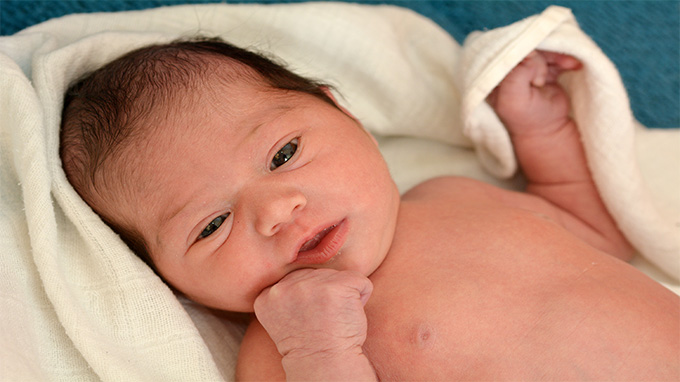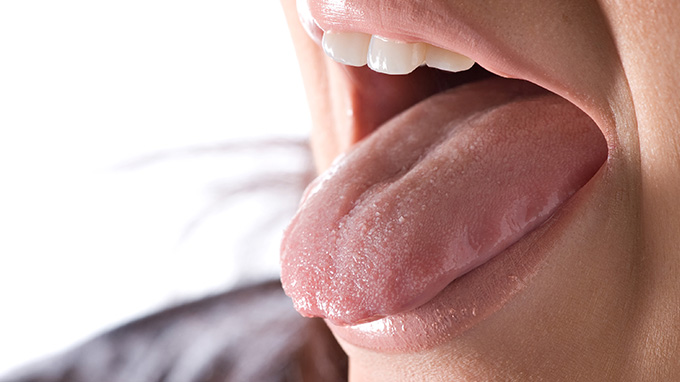Newborn pneumonia, what should parents know
One day, when I went to the outpatient clinic, a young couple came to the clinic with a child who was just a few days old. They said they had just come from another hospital and they had doubts about the diagnosis of that hospital because they Saying that the child does not have a fever or cough means that he eats less and has a bit of foam in his mouth, and that doctor diagnosed their child with neonatal pneumonia and requested hospitalization. They really couldn''t believe the diagnosis of that hospital, so they looked at it again. I carefully asked the child''s medical history and examined the child. I found that the child had a shortness of breath and a little fanny nose in addition to the symptoms they just described. The breath sounds are a little thick, and the lungs are a little wet rales. I told my family that the doctor in that hospital had a correct diagnosis. The child is neonatal pneumonia and must be hospitalized as soon as possible.

Why does that happen to parents Doubts? This is because neonatal pneumonia is the most atypical type of pneumonia. It is very different from our common pneumonia in older children. What are the atypical features of its clinical manifestations? Let me introduce them below.
Newborn pneumonia usually starts 3 days after birth, and it usually shows shallow breathing, shortness of breath (up to 60 times/min), bruising around the mouth, breast rejection, choking milk, vomiting foam, Nasal fan, inspiratory trident sign, low response, due to the imperfect development of the lungs of the newborn, there is no cough symptoms and few fevers when suffering from pneumonia; some children have symptoms of upper respiratory tract infection at the beginning of the disease, such as Stuffy nose, runny nose. To sum up briefly, it means that when parents see a newborn’s mouth vomiting foam, do not eat, cry, or move less, it should be highly valued, not fever or cough. If you find that the baby is poorly responded, the face is blue or gray, there is the same moaning and shortness of breath as an adult, the small nose is constantly flapping, the small head is breathing little by little (in medicine, it is called nod breathing), on the sternum, between the ribs The soft tissue of the sag appears to be depressed when inhaling. At this time, the condition is quite serious. Once the child is found to have the above symptoms, he should be sent to the hospital for treatment without delay.
Neonatal pneumonia is often caused by patients with respiratory tract infections (such as the child’s mother’s cold) close contact with the baby, and the pathogen is transmitted to the baby through droplets. The newborn’s resistance is very low. It is easy to descend infection and cause pneumonia.
Neonatal pneumonia can occur during intrauterine and childbirth. It is called prenatal and infectious pneumonia; it occurs after birth and is called postpartum infectious pneumonia. The former is mostly related to intrauterine infection, dystocia and asphyxia at birth, and the onset is early. In clinical practice, our common cause is postpartum infectious pneumonia.
Once a newborn gets pneumonia, it must be hospitalized. The main treatment measures include antibiotic treatment, oxygen supply, and supportive treatment. Regarding the specific treatment plan, different children are not exactly the same and need very children. The doctor in charge understands. Then I emphasize here that prevention and care are mainly for parents.
Pay attention to the following points: Neonatal pneumonia is infected due to weak resistance and contact with patients with respiratory tract infections, so we must pay attention to avoid contact with patients with respiratory tract infections in daily care. When the baby is born, naturally friends and relatives would like to congratulate. When holding the child to laugh, it is possible to pass bacteria or viruses to the child, because even normal people''s pharynx carries various viruses and bacteria. Therefore, try to decline too many relatives, especially those with a cold, to visit the child. It is usually more reasonable to visit the child after the full moon. If the child''s mother has a cold, it is recommended that she wear a mask and breastfeed the child. When everyone else in the family has a cold, they should also pay attention to isolation and wear masks if necessary.
At home, pay attention to ventilation and ventilation. The Chinese are confinement, and many places pay attention to covering. The house is not ventilated and the lamp is also covered, which is actually very unreasonable. Make sure to ventilate regularly every day. If you have a cold, you can smoke a little vinegar or disinfect the air with a UV lamp.
Warm reasonably. Newborns are born. Many parents are afraid that their children are freezing. No matter what season, it is very unreasonable to put on cotton-padded jackets for children. Children must also wear season-appropriate clothes, usually one more than older children. If you don’t have experience, you can take your child’s temperature and touch the spine. If the temperature is between 36 and 37 degrees, there is no sweat on the spine. , It shows that it is suitable to wear.
When the child is sick, plus the daily infusion of glucose, the milk intake must be lower than usual. At this time, be careful not to feed the child hard, do not feed too much, so as to avoid vomiting and lead to inhalation, and increase pneumonia Do not put down the child immediately after eating milk, hug more, pat the back gently to prevent milk reflux.
Although the incidence of neonatal pneumonia is high, if you go to the hospital in time and get reasonable treatment and care, the cure rate is high and the prognosis is good. Therefore, parents should usually observe their children more. If they find abnormalities, they must go to the hospital in time. They cannot resist first at home like older children.
Related Articles

- Why Chinese mothers breastfeeding rate is not high
- Today, the proportion of Chinese mothers who breastfeed exclusively is not high. Information shows that the proportion of Chinese mothers who are "breastfeeding" is 52.4%; followed
- 2020-08-02

- Breastfeeding children are more adaptable to the outside world
- Breastfeeding has many benefits. The latest research shows that breastfeeding children are more adaptable to the outside world. Studies have shown that breastfeeding children aged 0 to 1 y
- 2020-08-02

- Breastfeeding is good for mothers
- Everyone knows the benefits of breastfeeding, and has repeatedly emphasized that 4-6 months of exclusive breastfeeding is enough. However, according to surveys, breastfeeding rates in China
- 2020-08-02

- Baby grow up, how to add food supplement
- Xiaobao is 7 months old. The baby''s grandma said that it is time to add supplementary food to the baby. This morning, Grandma carefully steamed the eggs for her grandson. She told
- 2020-08-01

- What kind of milk should a child drink
- The benefits of breast milk for babies are well known. Unfortunately, mothers have to give up breastfeeding their children for various reasons. Therefore, milk replaces breast milk. Although
- 2020-08-01

- What is the relationship between infant vomiting and protein allergy (tolerance)
- Speaking of the repeated vomiting of small babies, many people immediately think of the word "disease from the mouth", and people often associate vomiting with digestive system dise
- 2020-08-01
